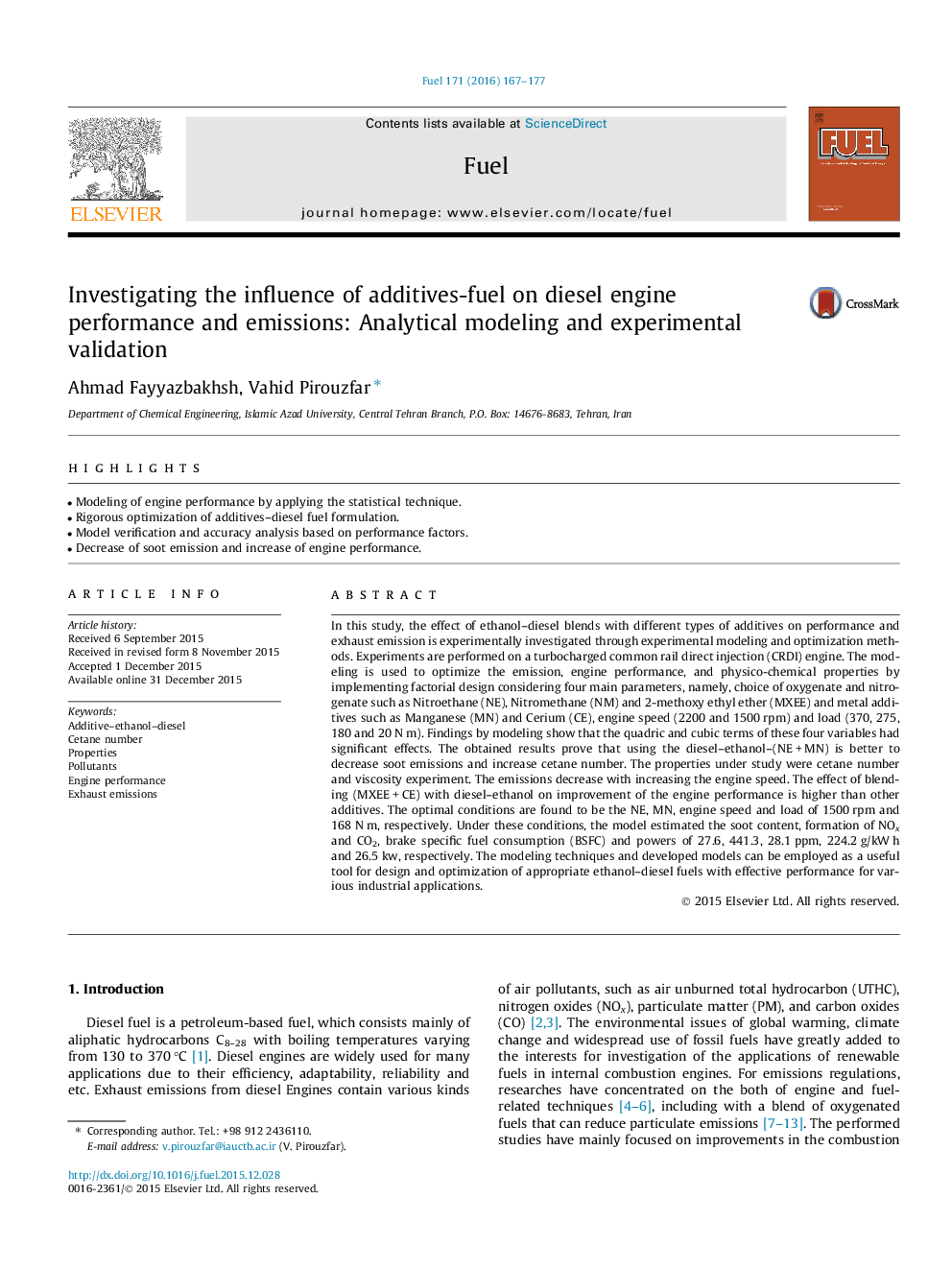| کد مقاله | کد نشریه | سال انتشار | مقاله انگلیسی | نسخه تمام متن |
|---|---|---|---|---|
| 205269 | 461102 | 2016 | 11 صفحه PDF | دانلود رایگان |
• Modeling of engine performance by applying the statistical technique.
• Rigorous optimization of additives–diesel fuel formulation.
• Model verification and accuracy analysis based on performance factors.
• Decrease of soot emission and increase of engine performance.
In this study, the effect of ethanol–diesel blends with different types of additives on performance and exhaust emission is experimentally investigated through experimental modeling and optimization methods. Experiments are performed on a turbocharged common rail direct injection (CRDI) engine. The modeling is used to optimize the emission, engine performance, and physico-chemical properties by implementing factorial design considering four main parameters, namely, choice of oxygenate and nitrogenate such as Nitroethane (NE), Nitromethane (NM) and 2-methoxy ethyl ether (MXEE) and metal additives such as Manganese (MN) and Cerium (CE), engine speed (2200 and 1500 rpm) and load (370, 275, 180 and 20 N m). Findings by modeling show that the quadric and cubic terms of these four variables had significant effects. The obtained results prove that using the diesel–ethanol–(NE + MN) is better to decrease soot emissions and increase cetane number. The properties under study were cetane number and viscosity experiment. The emissions decrease with increasing the engine speed. The effect of blending (MXEE + CE) with diesel–ethanol on improvement of the engine performance is higher than other additives. The optimal conditions are found to be the NE, MN, engine speed and load of 1500 rpm and 168 N m, respectively. Under these conditions, the model estimated the soot content, formation of NOx and CO2, brake specific fuel consumption (BSFC) and powers of 27.6, 441.3, 28.1 ppm, 224.2 g/kW h and 26.5 kw, respectively. The modeling techniques and developed models can be employed as a useful tool for design and optimization of appropriate ethanol–diesel fuels with effective performance for various industrial applications.
Journal: Fuel - Volume 171, 1 May 2016, Pages 167–177
